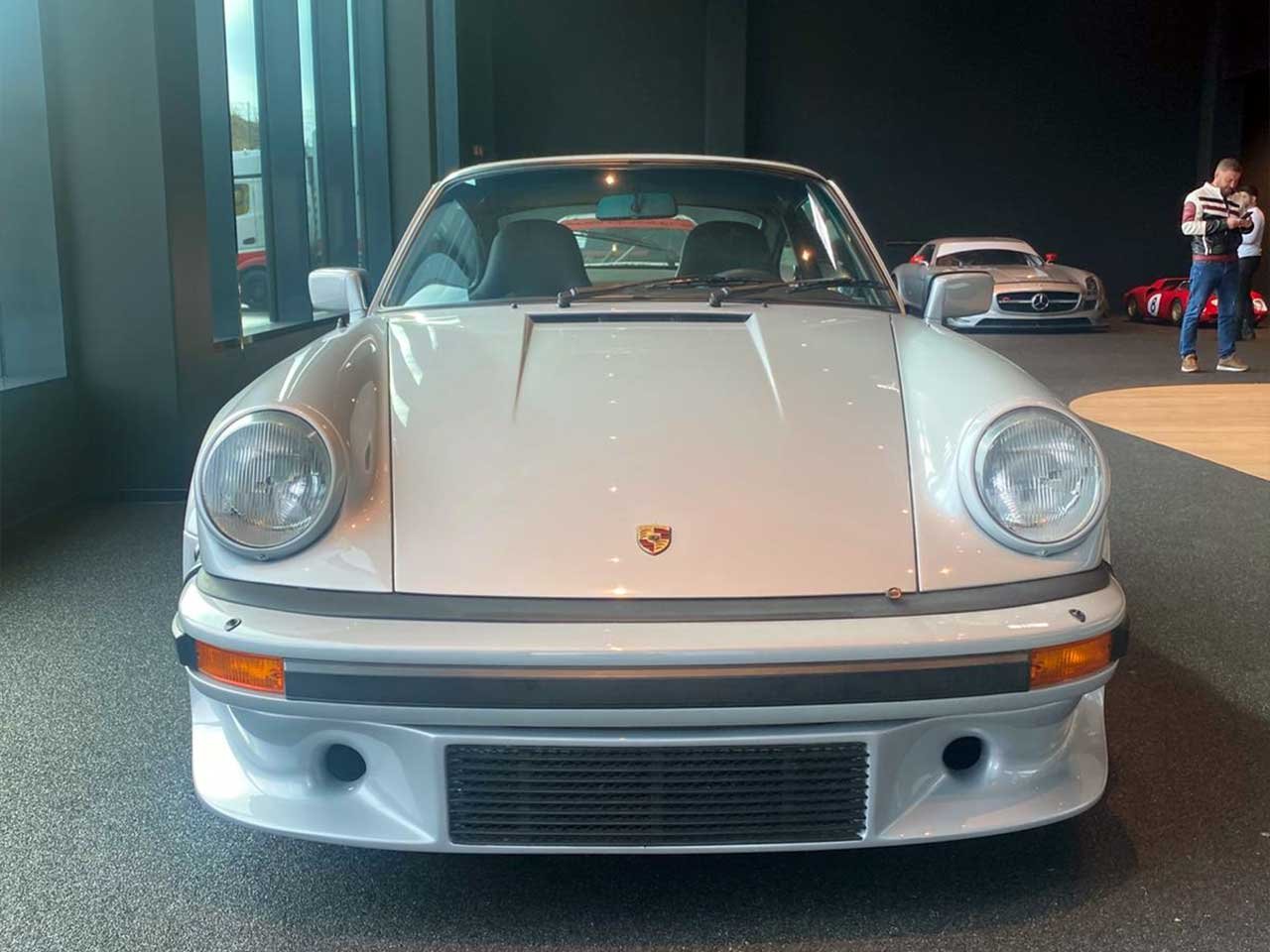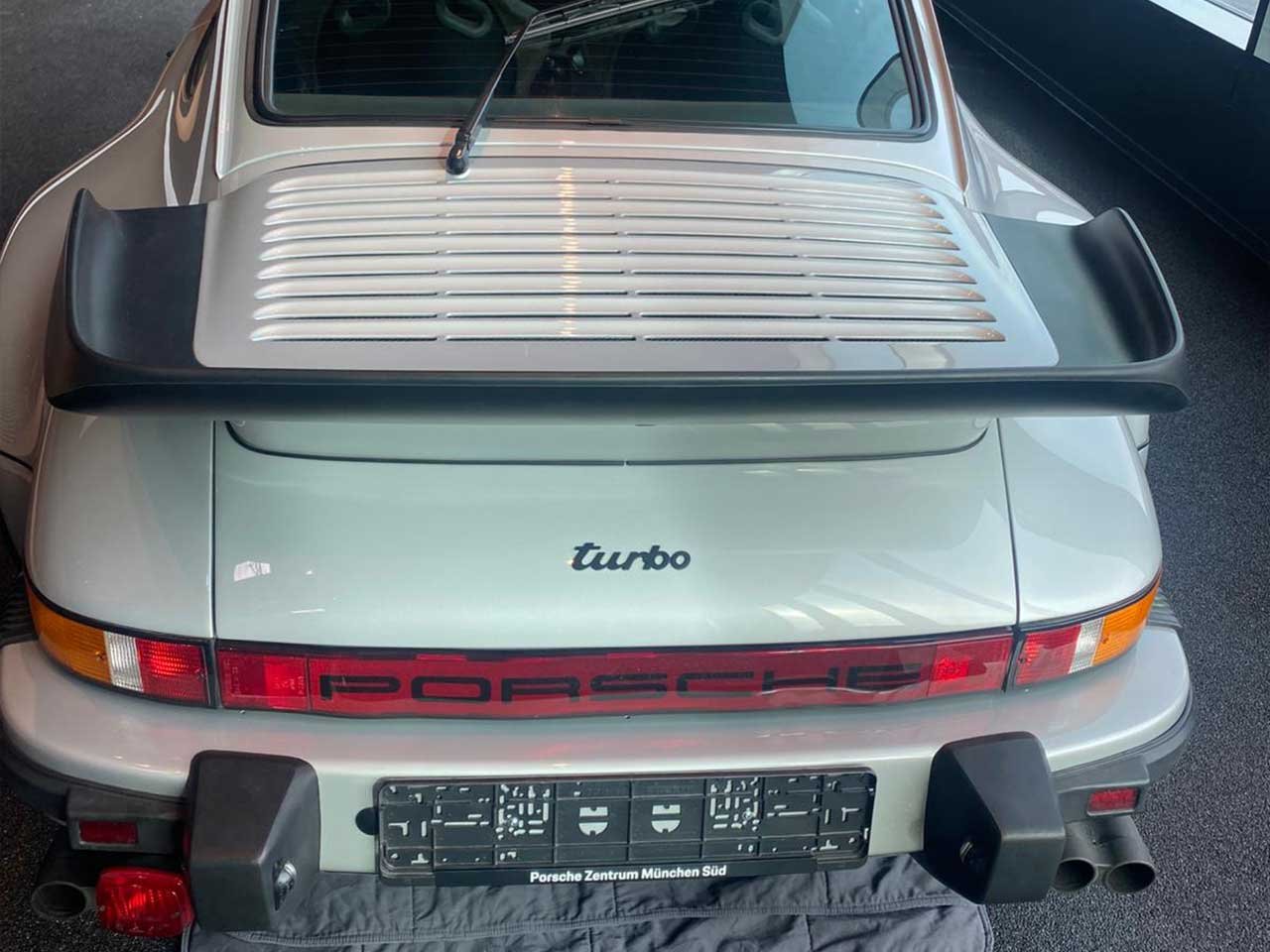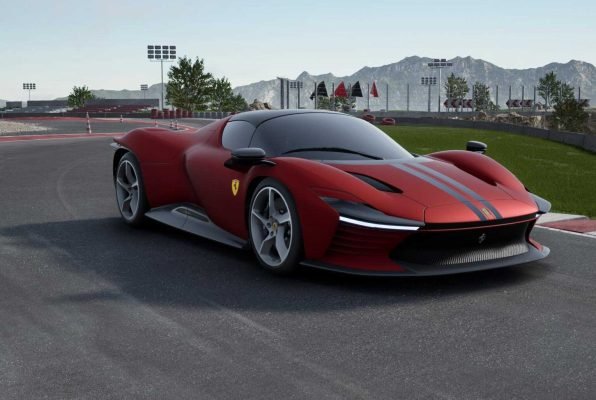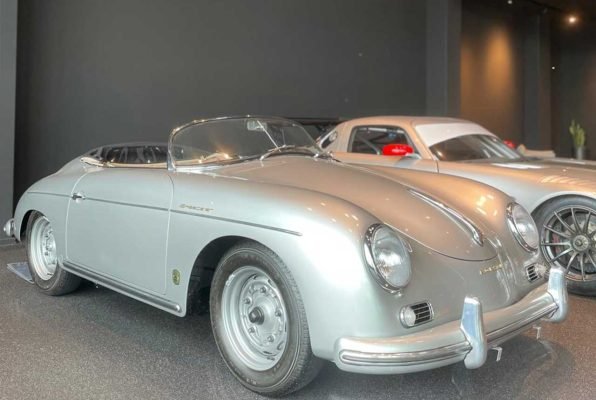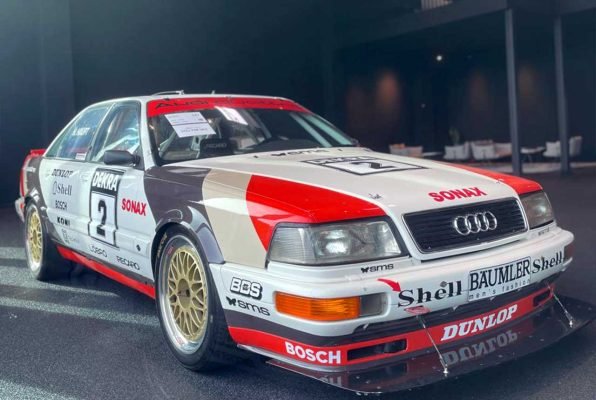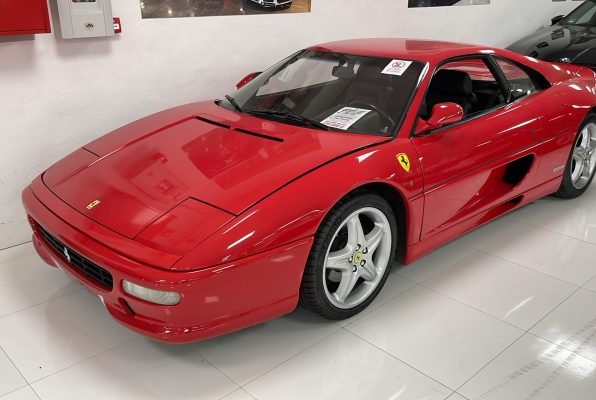The 1984 Porsche 911 Turbo (930), finished in an elegant Silver Metallic, is a definitive icon of automotive performance from the 1980s and a true driver’s machine. This legendary sports car is powered by a distinctive air-cooled, single-turbocharged 3.3-liter flat-six engine. This robust power plant generates a potent 300 HP at 5,500 RPM and a commanding 432 Nm (44.1 kgf·m) of torque, delivered to the rear wheels via a robust 4-speed manual transmission. The 930 Turbo is renowned for its thrilling acceleration, achieving 0–100 km/h (0–60 mph) in approximately 5.2 seconds, with a top speed approaching 260 km/h (162 mph). Despite its formidable power, it maintains a dry weight of approximately 1,300 kg (2,866 lbs), which, combined with its rear-engine layout, contributes to its unique and often challenging driving dynamics.
What truly sets the 911 Turbo (930) apart in its segment is its raw, unadulterated performance and unmistakable visual aggression. It pioneered the “turbo lag” phenomenon, characteristic of early turbocharged cars, which gave way to a surge of power that required skill and respect from the driver. Its iconic “whale tail” rear spoiler was not merely a design statement but a functional aerodynamic device crucial for managing high-speed stability and cooling the engine. The widened fenders, a signature element, housed larger wheels and tires, emphasizing its muscular stance and enhancing its grip. The 930 Turbo was not just fast; it was a visceral experience, demanding attention and rewarding precise inputs from the driver, embodying a purist’s vision of a high-performance sports car.
Inside, the 1984 911 Turbo (930) offers a cockpit that is quintessentially Porsche, blending sportiness with surprising levels of comfort for its era. The interior is characterized by high-quality leather upholstery, a classic five-dial instrument cluster dominated by the central tachometer, and an ergonomic layout that places all controls within easy reach of the driver. While luxurious by the standards of the day, the focus remains on the driving experience, with supportive sport seats designed to hold occupants firmly during spirited driving. The absence of modern electronic aids further emphasizes the mechanical purity and direct feedback that define the 930’s appeal.
The Porsche 911 Turbo (930) holds immense historical significance as the progenitor of the turbo-era 911s and a seminal vehicle that shaped the very definition of a supercar for its time. Introduced in 1975, the 930 was initially conceived as a homologation special for racing, but its overwhelming popularity led to continuous production. The 1984 model year benefits from the larger 3.3-liter engine introduced in 1978, offering enhanced power and improved cooling. It rapidly gained a reputation as the “Widowmaker” due to its challenging handling characteristics at the limit, particularly for inexperienced drivers, contributing to its legendary status. Today, the 930 Turbo remains a highly collectible and celebrated classic, revered for its bold design, formidable performance, and its pivotal role in establishing the 911 as a dominant force in the high-performance automotive landscape.

